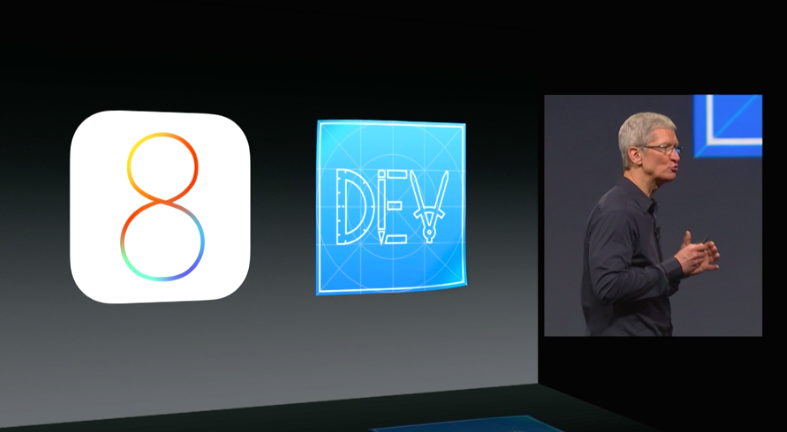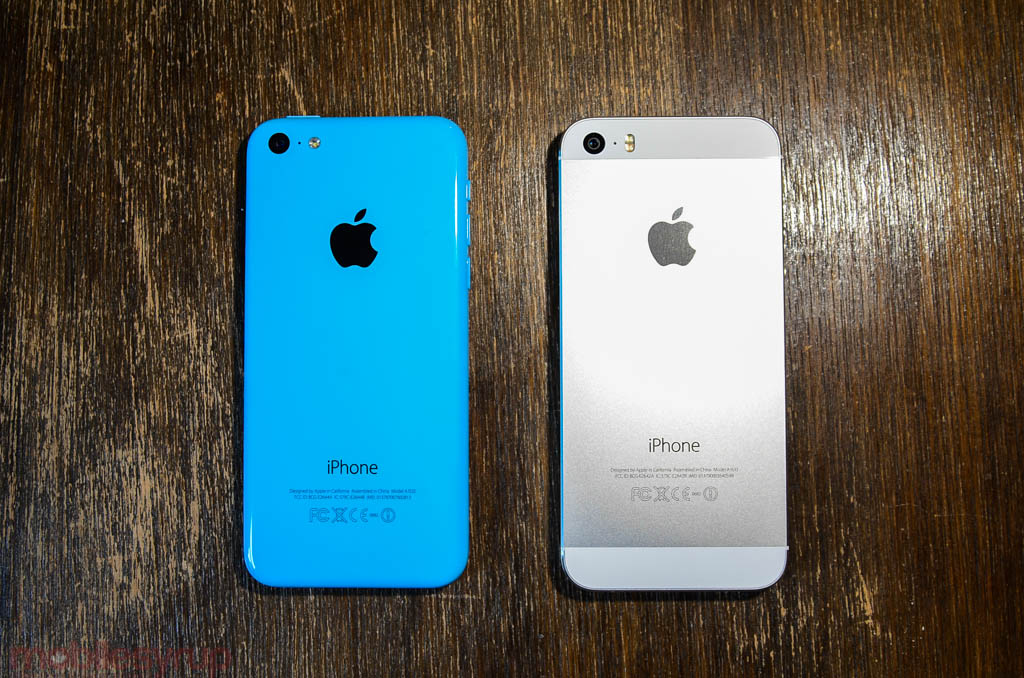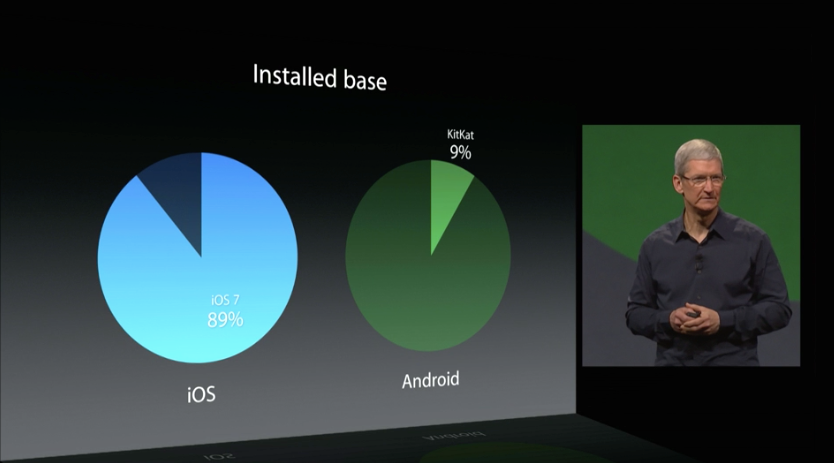
Welcome to Tête-à-tête, a series where two of our writers remark on interesting topics in the mobile landscape — through chat. This week, Douglas and Daniel talk about Apple’s enormous scale of announcements at this year’s WWDC, and which ones stand out.
Douglas Soltys: Well, that was exhausting. It has been a long time since there the last WWDC keynote that contained as many announcements. I was impressed not only by the scale of the announcements, but the depth; on top of new development tools and categories like the ‘Kit’ apps, Apple made significant improvements to every existing core feature of iOS. The net effect is quite impressive and certainly more than Apple had to provide to sate developers and the media. I’m wondering if there was a certain tree that stood out amongst the forest for you.
Daniel Bader: I think it’s important to break the announcements into two, as Apple did: the consumer improvements in iOS 8, and the developer shifts through an insane number of new API’s, SDKs, Metal for low-level graphics and, of course, Swift, the new programming language poised to replace Objective-C.
On a consumer level, it appears that indeed iOS 8 is playing catch-up. Apple was fully aware that many of the features added to iOS 8, especially Extensions, were “borrowed” from other operating systems. The company has never been scared to crib where it deems necessary, and usually waits a generation or two before it feels perfection has been obtained. Whereas Android has always been about quick iterations that, while technically impressive, are often rough around the edges, Apple tends to err on the side of caution with iOS.
As for what I’m most excited for, on the consumer side iOS 8 offering third-party keyboards and actionable notifications is big, because those are two features I adore about Android. Being able to use SwiftKey in every app on iOS is going to be a big change; allowing apps to talk to one another, especially with authentication being provided by the new TouchID SDK, is going to be bigger still.
On a personal level, as a photographer I love that Apple is finally lowering iCloud costs and embracing the role of the cloud for photo storage. No longer having to worry about losing photos to the ether because Photo Stream only supports 1,000 photos — the new iCloud Photo Library backs up all your photos, indefinitely — is going to be wonderful, especially for those with lower-capacity iPhones.
Yes, Apple is reproducing functionality that currently exists in Android and Windows Phone, but no company, including Google, can claim innocence in this regard. It’s not a matter of who did it first, but who does it best.

Douglas Soltys: I agree we should shelve the developer stuff for now. Not only will they take longer to bear fruit, but you and I are woefully unqualified to judge the relative merits of Metal and Swift beyond their names (verdict: pretty good!). I have spent quite a few years working beside mobile developers, however, and my Spidey sense is telling me the news was significant based upon the high degree of tingling across the Internet.
I also care not a rot from whence features come from, be it BlackBerry 10, Android, or the moon. The value of a feature is not in its origin, but how well integrated it is into the overall experience. Apple does this better than anyone else, taking the time to implement a feature when it’s good and ready, and I think overall the tradeoff for a curated experience is worth waiting a little longer for, say, actionable notifications. It also helps that when Apple releases a new feature, the vast majority of iOS users have access to it.

All that said, iOS 7 was essentially a vigorous palette swap, and it is heartening to see Apple adding a greater level of sophistication to what is now a long-in-the-tooth OS. iOS 8 apps will now talk with other apps, much more of the information presented is dynamic and interactive, and there’s finally a degree of customization to go with Apple’s curation (see: 3rd party keyboards).
But the really interesting bit is that iOS 8 extends itself beyond the device it’s running on. The networked benefits between iOS and OS X provided by Continuity and Handoff are things sorely needed across the industry, and if enough services adopt Apple’s ‘Kit’ (HealthKit, HomeKit, CloudKit) solutions as standards, the iPhone could become a life remote/sonic screwdriver combo. Google is very good at building device agnostic services, and it’s telling that Apple with iOS 8 has focused on services (or service enablers) that live beyond its hardware.
Daniel Bader: And here we get to the crux of the issue: Apple, because it designs and builds both hardware and the software, it can create those networked experiences that people rely on, day after day. It may seem trivial, but whenever I switch from an iPhone to Android, my main concern is with the dozens of iPhone users that will no longer be able to iMessage me.
But as the years went on, Apple just couldn’t keep up with the features that other companies were doing better on their own platform. Take photo backups, for instance. iOS 8 is set to completely revamp not only the pricing structure of iCloud, but allow for unlimited backups of photos in RAW format, with all changes made to them synced between iPhone, iPad, Mac and the web. It’s an ambitious project that is sure to have a few bugs — what Apple cloud service hasn’t been fraught with issues upon launch? — but the company seems more self-assured these days about created connected experiences through the miasma of the cloud.
Metal and Swift, and the “Kits”, won’t have immediate impact on iOS 8 users; developers need to learn how and when to best replace OpenGL with the former, and Objective-C with the latter, and may choose to ignore them completely. But we’ve often heard from Android devs that, though it is improving, developing for the myriad Android devices out there, now numbering in the thousands, is a nightmare. Even as Apple ratchets up the screen and resolution sizes of its products, it has maintained a copacetic, if occasionally terse, relationship with its development community.
That Apple felt comfortable stealing popular features from Android only goes to show that it understands its audience. Most iPhone users who go (or went and came back) to Android do so not because Android is necessarily a better platform but because it affords more flexibility, both in control of the operating system itself and the type of device to purchase. iOS 8 is the tacit understanding that Apple users want to be able to do more with their operating system, and gives those who departed for Android a reason to come back. Apple will never admit this fact, but bridging the ever-widening gap between it and Google, both in flexibility of iOS and the strength of its cloud services, carries strong implications for the road ahead.
MobileSyrup may earn a commission from purchases made via our links, which helps fund the journalism we provide free on our website. These links do not influence our editorial content. Support us here.


